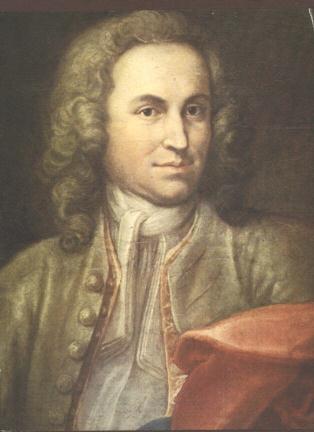|
If one instrument is inextricably associated with the name of Johann Sebastian Bach, it is the organ. Writing organ music at all times of his life, his first known compositions as well as that often cited as his very last1 were for this instrument. Bach's extensive oeuvre for the organ shines out over its entire literature like a beacon lighting the way of all others; no subsequent organ composer has failed to be profoundly influenced by the Master's corpus organisticum. Bach is without doubt the only composer of organ music most music-lovers can name2. Every organist begins and carries on his or her study with the organ works of Bach, and cannot be considered a serious performer until he or she has mastered their technical and emotional challenges. It is rare that an organ recital not devoted to some other specific period fails to include works by Bach. In spite of the magnificent and lasting accomplishments of organ giants such as Buxtehude, Pachelbel, Sweelinck, Franck, Widor, Vierne, Dupré, Reger, and so on, Bach indisputably and utterly dominates the history and literature of this instrument.
Bach was employed as organist in Weimar, Arnstadt, and elsewhere, taught organ, including many significant composers of organ music of the following era, and, in spite of general public ignorance of his works and greatness, enjoyed a substantial and widespread reputation as an organist. (One must keep in mind that an organist then had much akin with a rock guitarist now: acclaim as such implied not only "chops" (technical dexterity), but an ability to improvise and create in an appropriate style. This is still the case in France.)
Bach's Royal Instrument, as Robert Schumann dubbed the organ, the largest, most powerful, and most varied instrument of all, is yet often neglected by music lovers today, especially children learning to love "classical music", as the indigenous literate musical tradition of Europe has come to be known. Not only the venerable and broad tradition of the instrument, but its basic description and capabilities remain a mystery to most music-lovers. In part, this is due to the fact that organs have by and large been found only in (Western) Christian churches, and instruments of good quality in good repair are the exception. While a general decline in church attendance over the last century, as well as worldwide appreciation of Europe's traditions by persons who are not Christians, has worked, sadly, to push the organ and its monumental literature out of the view of most music lovers, the advents of recording, new organs in new concert halls, and affordable electronic instruments which do an increasingly credible job of imitating pipe organs have all helped to stem this tide in recent decades. Until this century, there were no performing organists who were not associated with churches, and thus had to leave a full-time job to perform elsewhere.
OHRDRUF: 1695-1700
Johann Christoph was an excellent teacher - all of his five sons were to reach positions of some eminence in music, and he was a keen student of the latest keyboard compositions.
Johann Sebastian at once settled down happily in this household studying the organ and harpsichord with great interest under his brother, and he quickly mastered all the pieces he had been given. When a new organ was installed at the Ohrdruf church, Christoph allowed his young brother to watch its construction. He also encouraged him to study composition and set Sebastian to copying music by German organist composers such as Jakob Froberger, Johann Caspar Kerll and Pachelbel. An anecdote tells how Christoph punished his young brother when he discovered he had copied a forbidden musical manuscript by moonlight over a period of six months and confiscated the precious copy.
During this period Johann Sebastian attended the Gymnasium (grammar school) of Ohrdruf, once a monastic foundation, which had become one of the most progressive schools in Germany. He made excellent progress in Latin, Greek and theology, and had reached the top form at a very early age. The scholars of the Gymnasium, as at Eisenach, were also employed as choir-boys, and their Cantor, Elias Herda, had a high opinion of Johann Sebastian's voice and musical capabilities.
It was his excellent soprano voice that found Johann Sebastian a position in the choir of the wealthy Michaelis monastery at Lüneburg, which was known to provide a free place for boys who were poor but with musical talent. This was no doubt arranged by Elias Herda who had held a scholarship there himself.
In the Spring of 1700 Johann Sebastian set out on foot with his schoolfriend, Georg Erdmann, who was also joining the choir, on the journey of a hundred and eighty miles north to Lüneburg.


|








